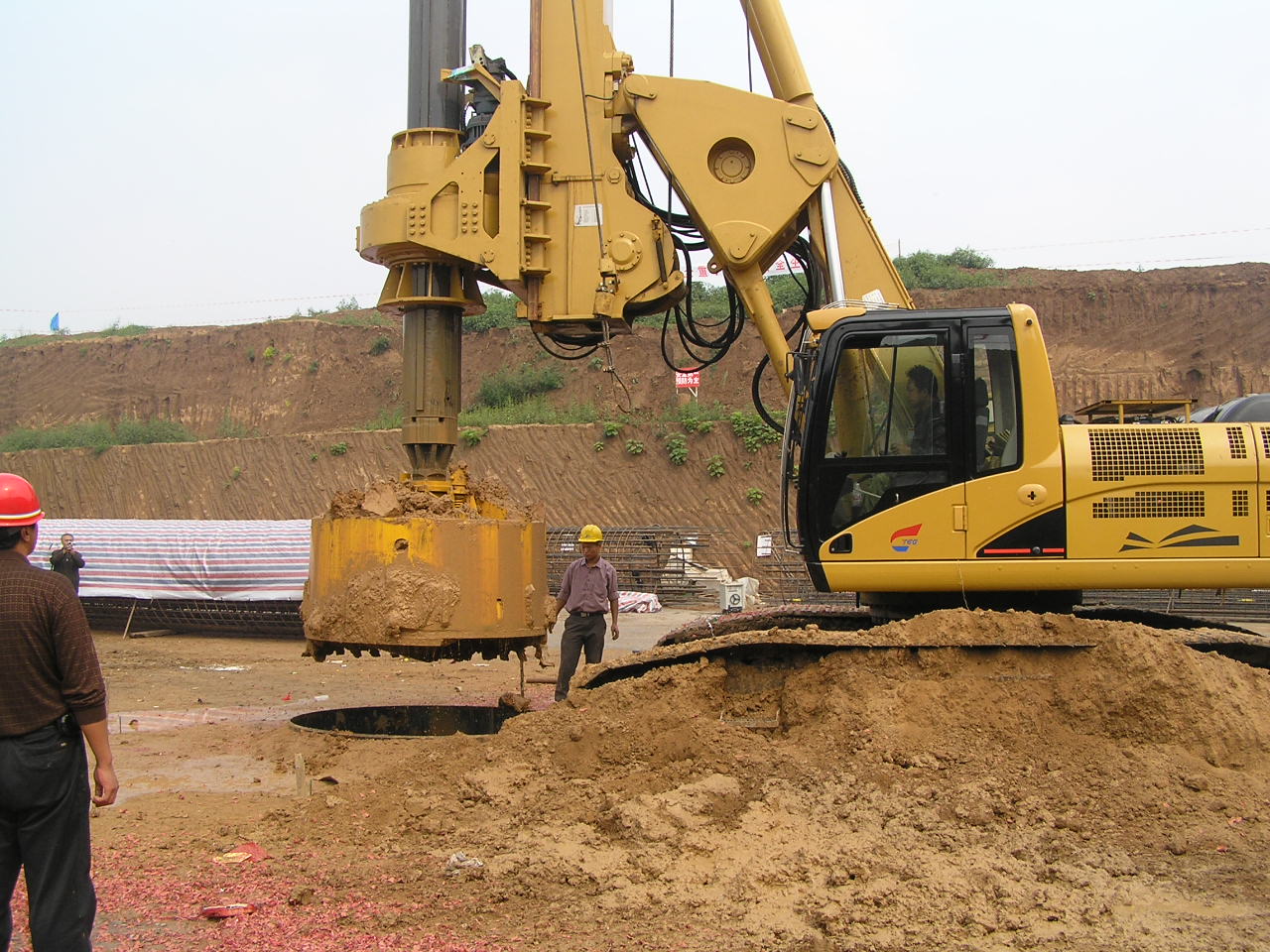1. The characteristics and risks of sand and silt layer
When drilling holes in fine sand or silty soil, if the groundwater level is high, mud should be used to form holes for wall protection. This kind of stratum is easy to be washed under the action of water flow because there is no adhesion between particles. Because the rotary drilling rig directly takes the soil into the hole, the drilled soil is recycled by the drill bucket to the ground. The drilling bucket moves in the mud, and the water flow speed outside the drilling bucket is large, which is easy to cause erosion of the hole wall. Sand washed by the hole wall further reduces the wall protection effect of the wall protection mud. It is more likely to cause problems such as neck protection and even hole collapse.
2. When the construction method of rotary drilling adopts mud wall protection in the first good sand or silt soil layer, the following measures should be considered:
(1) Properly reduce the lowering and pulling speed of the drill bit, reduce the flow rate of mud between the drill bucket and the hole wall, and reduce erosion.
(2) Appropriately increase the Angle of the drill teeth. Increase the spacing between the hole wall and the side wall of the drill bucket.
(3) Appropriately increase the area of the water hole in the drilling bucket, reduce the negative pressure at the top and bottom of the drilling bucket during the extraction process, and then reduce the flow rate of the mud in the small hole.
(4) Configure high-quality mud wall protection, timely measure the sand content of the mud in the hole. Take effective measures in time when exceeding the standard.
(5) Check the tightness of the bottom cover of the drill bucket after closing. If it is found that the gap caused by distortion is large, it should be repaired in time to avoid sand leakage.
Post time: Feb-23-2024


